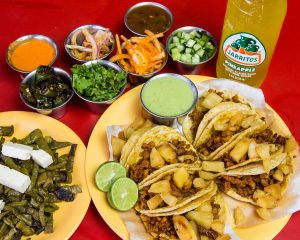Hearty Traditions: Soul Food Restaurants
Soul food, with its rich historical roots in the African American community, stands as a testament to resilience, creativity, and community. Soul food restaurants, whether they’re age-old institutions in the American South or modern renditions in bustling metropolises, provide a sensory experience that transcends mere dining. With every dish, they echo stories of family gatherings, Sunday church services, and cultural pride.
The Pillars of Soul Food
Collard Greens
A staple in many soul food meals, collard greens are often slow-cooked with ham hocks or smoked turkey, resulting in a deeply flavorful and comforting side dish that’s rich in both history and nutrients.
Fried Chicken
Crispy on the outside, tender and juicy within, soul food fried chicken is a celebration in itself. Seasoned to perfection and fried to a golden brown, it’s a dish that resonates with memories of family picnics and communal feasts.
From the Farm to the Table
Cornbread
This slightly sweet and crumbly bread, often baked in cast iron skillets, complements many soul food dishes. It’s a nod to the agricultural roots of the African American community, symbolizing sustenance and togetherness.
Black-Eyed Peas
Believed to bring good luck, black-eyed peas are often cooked with spices and bits of meat, resulting in a hearty dish that speaks of hope, prosperity, and tradition.
Candied Yams
Sweet potatoes, glazed with a mixture of butter, sugar, and spices, then baked to caramelized perfection, represent the sweet side of soul food, balancing out the savory flavors of other dishes.
Beverages that Stir the Soul
Sweet Tea
A quintessential Southern drink, sweet tea is both refreshing and comforting, often served ice-cold with a slice of lemon. Its sweetness mirrors the warmth and hospitality of soul food dining.
Lemonade
Another staple beverage, homemade lemonade, with its balance of tart and sweet, pairs perfectly with a variety of soul food dishes, offering a refreshing palate cleanser.
Conclusion
Soul food restaurants are more than just eateries; they’re havens of cultural preservation, showcasing recipes passed down through generations. Every bite is a journey through history, echoing the struggles, triumphs, and boundless spirit of the African American community. Whether it’s the spicy kick of a pot of gumbo or the melt-in-your-mouth goodness of a peach cobbler, soul food warms the heart and nourishes the soul.
FAQs
1. What’s the history behind soul food?
Soul food has its origins in the African American community, especially in the Southern United States. It evolved from dishes prepared by enslaved Africans, using available ingredients, and over time became a distinct and beloved culinary tradition.
2. Are there vegetarian or vegan options in soul food?
Yes, while many classic soul food dishes include meat, there are numerous vegetarian and vegan variations. Dishes like okra gumbo, vegetable jambalaya, and vegan mac ‘n’ cheese highlight the cuisine’s adaptability.
3. Why is it called “soul food”?
The term “soul food” gained popularity during the Civil Rights and Black Power movements of the 1960s. It embodies the essence of food that feeds not just the body but also the soul, reflecting its deep cultural and emotional significance.
4. What distinguishes soul food from general Southern cuisine?
While there’s considerable overlap, soul food traditionally represents dishes that were staple and significant among African Americans in the South. It focuses on resourcefulness, using every part of an ingredient, and has specific cultural and historical connotations.
5. Are desserts prominent in soul food cuisine?
Absolutely! Desserts like banana pudding, pecan pie, and sweet potato pie are integral to soul food, often rounding off communal meals and celebrations.






























